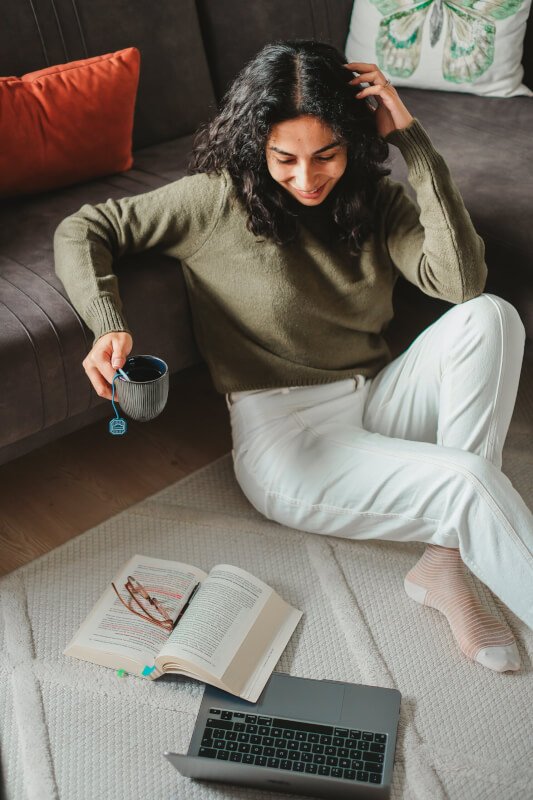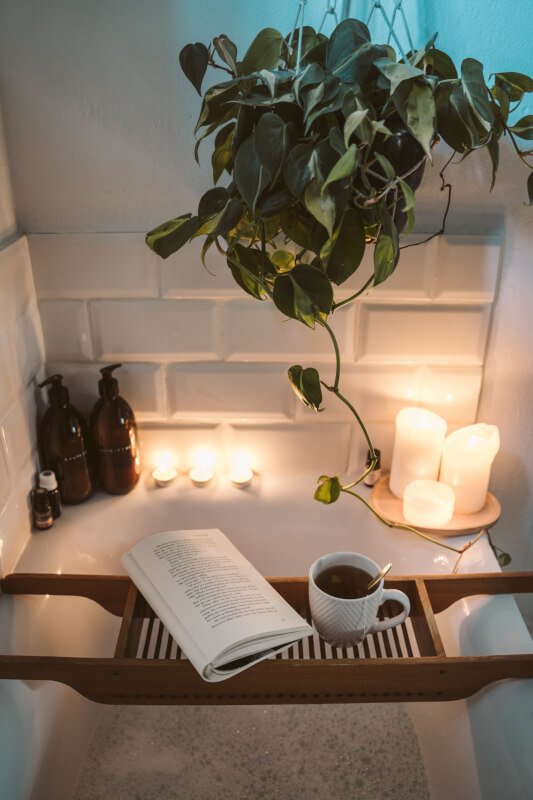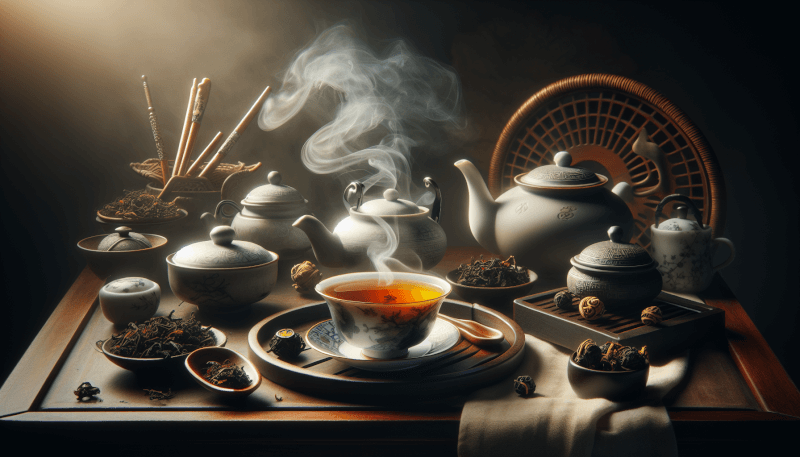Oolong tea is a beloved drink known for its delicious taste and numerous health benefits. However, brewing this tea can be a bit tricky, and many people unknowingly make mistakes that affect the flavor and quality of their brew. In this article, we will explore some common mistakes to avoid when brewing oolong tea, so you can enjoy a perfectly brewed cup every time. Whether you’re a beginner or a tea enthusiast, these tips will help you navigate the world of oolong tea and enhance your tea-drinking experience. So grab your teapot and let’s get started!

Using Water at the Wrong Temperature
When it comes to brewing the perfect cup of oolong tea, the temperature of the water is crucial. Using water at the wrong temperature can greatly affect the taste and aroma of your tea. Let’s delve into the two main temperature-related mistakes to avoid: boiling water and water that’s too cold.
Boiling Water
Boiling water may seem like the obvious choice when making tea, but that’s not always the case with oolong tea. Oolong tea leaves are delicate and require a more gentle touch. Boiling water can scorch the leaves and result in a bitter and unpleasant taste.
To avoid this mistake, it’s important to use water at around 190°F (88°C) for most oolong teas. This slightly lower temperature allows the flavors to develop more slowly, resulting in a smoother and more nuanced cup of tea. Investing in a good quality thermometer or an electric kettle with temperature control can greatly help in achieving the perfect water temperature.
Water That’s Too Cold
On the other hand, using water that’s too cold can leave your oolong tea tasting weak and lackluster. The flavor profile of oolong tea depends on an optimal extraction of its natural oils and compounds. If the water is too cold, it won’t extract these flavors effectively, leading to a disappointing cup of tea.
To avoid this mistake, aim for water around 180°F (82°C) for lighter and greener oolong teas, while slightly higher temperatures of around 200°F (93°C) work better for darker and more oxidized oolong teas. Adjusting the water temperature according to the type of oolong tea you’re brewing will ensure you’re extracting the best flavors from the leaves.
Choosing the Wrong Tea Leaves
When it comes to oolong tea, the quality of the leaves you choose makes a significant difference in the taste and overall experience. Here, we’ll explore two common mistakes related to choosing the wrong tea leaves: using low-quality leaves and overly aged leaves, as well as not selecting the appropriate oolong type.
Low-Quality Leaves
Using low-quality oolong tea leaves might be tempting due to their affordability, but it’s a mistake that can greatly compromise the taste of your tea. Low-quality leaves are often poorly harvested and processed, resulting in a less flavorful cup. The leaves may also contain impurities or additives that can negatively impact the aroma and health benefits of oolong tea.
To avoid this mistake, invest in high-quality oolong tea leaves sourced from reputable sellers. Look for leaves that are plucked at the right time and properly processed. This ensures that you’re getting the full flavor profile and natural goodness of oolong tea.
Overly Aged Leaves
While the aging process can enhance certain types of tea, oolong tea is best enjoyed fresh. Overly aged leaves can result in a stale and muted flavor profile, diminishing the unique characteristics that make oolong tea so special.
To avoid this mistake, check the freshness of your oolong tea leaves before purchasing or brewing. Look for information on the harvest date or production year. The fresher the leaves, the more vibrant and distinct the flavors will be.
Wrong Oolong Type
Another common mistake is using the wrong oolong type for your preferences. Oolong tea ranges from light and floral to dark and roasted, each with its own unique flavor profile. Using the wrong type can lead to disappointment in terms of taste and enjoyment.
To avoid this mistake, familiarize yourself with the different types of oolong tea and their characteristics. Experiment with different varieties to find the ones that appeal to your personal taste preferences. Don’t be afraid to seek guidance from knowledgeable tea sellers or explore online resources to gain a deeper understanding of the various oolong types available.

Incorrect Steeping Time
Steeping time is a critical factor when it comes to brewing oolong tea. This mistake often happens due to impatience or a lack of understanding about the optimal steeping duration. Let’s explore the importance of correct steeping time to ensure you’re getting the best aromas and flavors from your oolong tea.
Finding the perfect balance between under-steeping and over-steeping is crucial for brewing exceptional oolong tea. Steeping oolong tea for too short a time can result in a weak and insipid brew, lacking the full range of flavors. Conversely, leaving the leaves to steep for too long can extract excessive tannins, leading to a bitter and unpleasant taste.
To avoid this mistake, start with the recommended steeping time provided on the packaging of your oolong tea. Typically, a range of 2-5 minutes is recommended, depending on the specific type of oolong tea you’re brewing. Keep in mind that steeping times may vary based on personal preferences, so feel free to adjust the duration to suit your taste.
Improper Water-to-Tea Ratio
Having the right water-to-tea ratio is vital for brewing a balanced and flavorful cup of oolong tea. Incorrectly measuring the amount of tea leaves or water can result in a brew that’s too weak or too strong, leaving you unsatisfied with the taste.
To avoid this mistake, use a precise measurement for both the tea leaves and water. Generally, a common guideline is to use around 2-3 grams of oolong tea per 8 ounces (240 mL) of water. However, feel free to adjust this ratio based on personal preference or the specific characteristics of the oolong tea type you’re brewing. Experimentation is key to finding your ideal water-to-tea ratio.

Not Rinsing the Tea Leaves
Rinsing oolong tea leaves is a crucial step that often goes overlooked. Failing to rinse the leaves can prevent the best flavors from being extracted during the brewing process. Additionally, rinsing helps eliminate any dust, debris, or residual impurities that may be present on the leaves.
To avoid this mistake, gently rinse the oolong tea leaves with hot water before brewing. Simply pour hot water over the leaves, allowing them to sit for a few seconds before discarding the water. This quick rinse will awaken the leaves and remove any unwanted particles, enabling a more flavorful and enjoyable cup of oolong tea.
Using Dirty Tea Ware
The cleanliness of your tea ware directly influences the taste and quality of your oolong tea. Neglecting to clean your tea utensils and infusion vessels can introduce unwanted flavors and impede the true essence of the tea. Let’s explore the three main areas where cleanliness matters: unwashed tea utensils, infusers with residue, and infusion vessels with a lingering taste.
Unwashed Tea Utensils
Using unwashed tea utensils, such as cups, teapots, or tea trays, can contaminate your oolong tea with lingering flavors from previous uses. The accumulated residue or oils can alter the aroma and taste of your freshly brewed tea, resulting in a less than satisfactory experience.
To avoid this mistake, make sure to thoroughly wash all tea utensils before each use. Use gentle dish soap and warm water to remove any potential residue. Pay extra attention to teapots and cups with narrow spouts or handles, as they can easily accumulate debris that can affect the taste of your tea.
Infusers with Residue
If you prefer using infusers to steep your oolong tea, be mindful of the residue that can accumulate within the infuser itself. Failing to clean the infuser properly can lead to an undesirable taste in your tea, as the residue can transfer onto the leaves during brewing.
To avoid this mistake, clean your infusers diligently after each use. Rinse them under warm water and use a small brush to remove any trapped tea particles. If necessary, you can also soak the infuser in a mixture of warm water and vinegar to eliminate stubborn residues. Regular maintenance ensures that your infusers remain free from unwanted flavors that can impact the taste of your oolong tea.
Infusion Vessels with Lingering Taste
The choice of infusion vessel, such as teapots or cups, plays a significant role in your oolong tea experience. However, if your tea ware retains lingering tastes from previous brews, it can compromise the purity and flavor of your new infusion.
To avoid this mistake, clean your infusion vessels thoroughly and ensure they’re free from any lingering tastes or odors. If necessary, soak them with a diluted solution of baking soda and warm water to eliminate stubborn flavors. Regularly cleaning and maintaining your infusion vessels will ensure that you’re able to fully enjoy the true flavors of your oolong tea.

Over-Steeping or Under-Steeping the Tea
Finding the perfect balance in steeping your oolong tea is crucial for achieving the desired taste and aroma. Over-steeping or under-steeping your tea can lead to imbalances in flavor and hinder your overall tea experience. Let’s explore these two common mistakes in more detail.
Over-Steeping
Over-steeping oolong tea can have a negative impact on its taste, resulting in a bitter and astringent cup. This mistake occurs when the leaves are left to steep beyond their ideal duration, allowing excessive tannins to be extracted from the leaves.
To avoid this mistake, ensure you follow the recommended steeping time for your specific oolong tea type. If you accidentally over-steep your tea, consider diluting it with some additional hot water to balance out the flavors. Remember to pay attention to the steeping time to enjoy a well-balanced and smooth cup of oolong tea.
Under-Steeping
Under-steeping your oolong tea, on the other hand, can lead to a weak and unfulfilling brew. Inadequate steeping time limits the extraction of the tea’s flavors, leaving you with a lackluster cup.
To avoid this mistake, be sure to follow the recommended steeping time for your oolong tea. If you prefer a stronger flavor, you can slightly increase the steeping time. However, be cautious not to exceed the optimal duration and risk over-steeping. Finding the right balance of steeping time will ultimately result in a more satisfying cup of oolong tea.
Using Tap Water
The quality of the water used for brewing oolong tea greatly influences its taste. Tap water, though convenient, may contain impurities such as heavy chlorination, which can interfere with the delicate flavors and aromas of the tea.
Tap Water with Heavy Chlorination
Tap water with a heavy chlorination content can give your oolong tea an unpleasant taste and odor. Chlorine is typically added to tap water to kill bacteria, but its presence can mask the natural flavors of the tea and introduce an unwanted chemical taste.
To avoid this mistake, it’s advisable to use filtered or purified water for brewing oolong tea. Filtering the water can remove impurities, including chlorine, and result in a purer and more enjoyable tea experience. If filtered water is not readily available, you can also let the tap water sit for some time to allow the chlorine to dissipate before using it for brewing.

Not Pre-Heating the Tea Ware
For the optimal brewing experience, it’s crucial to pre-heat your tea ware before introducing the oolong tea leaves. Neglecting this step can result in a loss of temperature, which can affect the extraction and overall taste of the tea.
To avoid this mistake, pour hot water into your teapot, cups, or any other tea ware that will come into contact with the tea leaves. Allow the water to sit for a few moments before discarding it. This step ensures that the tea ware is at an optimal temperature to preserve the flavors and aromas of the oolong tea when it’s brewed.
Storing Oolong Tea Improperly
Proper storage of oolong tea is essential to maintain its freshness and prevent the tea leaves from deteriorating. Exposure to light, moisture, and improper storage containers can all contribute to a decline in flavor and quality.
Exposure to Light
Keeping oolong tea exposed to light can lead to degradation of its natural compounds and flavors. Ultraviolet rays can also accelerate the breakdown of the tea leaves, resulting in a less vibrant and flavorful brew.
To avoid this mistake, store your oolong tea in airtight containers made of dark or opaque materials. These containers will shield the tea leaves from direct light and help preserve their quality for a longer period. Additionally, store the containers in a cool and dark location, such as a pantry or cupboard, to further protect the tea from light exposure.
Exposure to Moisture
Exposing oolong tea to moisture can cause it to lose its flavors and develop mold or other unwanted growth. Moisture can also lead to clumping of the tea leaves, making it difficult to achieve an even brew and affecting the overall taste.
To avoid this mistake, ensure your tea storage containers are moisture-proof and airtight. Store them in a dry environment with low humidity levels. It’s also advisable to keep the original packaging of the oolong tea, as many manufacturers provide resealable bags or containers specifically designed to maintain the tea’s freshness.
Improper Storage Containers
Using improper storage containers for your oolong tea can compromise its freshness and flavor. Containers made of materials like plastic or glass that are not airtight can allow air and moisture to enter, resulting in the deterioration of the tea leaves.
To avoid this mistake, invest in storage containers specifically designed for tea. Look for containers made of materials such as ceramics or tin, which offer better protection against air and light. Ensure the containers have airtight seals to prevent the entry of external factors that can degrade the tea leaves’ quality. Proper storage containers will help preserve the freshness and flavor of your oolong tea for an extended period.
In conclusion, brewing a perfect cup of oolong tea requires attention to various factors. By avoiding common mistakes such as using water at the wrong temperature, choosing the wrong tea leaves, incorrect steeping time, improper water-to-tea ratio, skipping rinsing, using dirty tea ware, over-steeping or under-steeping, using tap water with heavy chlorination, neglecting pre-heating the tea ware, and storing oolong tea improperly, you can enhance your tea-drinking experience and fully appreciate the nuanced flavors and aromas that oolong tea has to offer. So, next time you prepare a cup of oolong tea, remember these tips and enjoy the delightful journey of this remarkable tea. Cheers!


